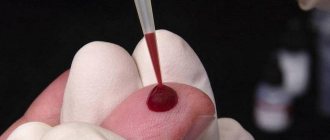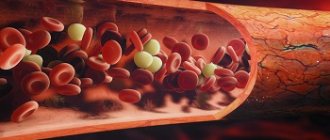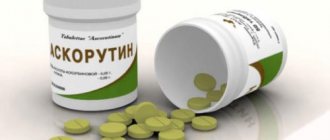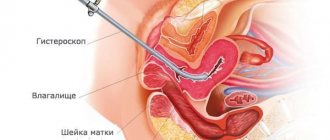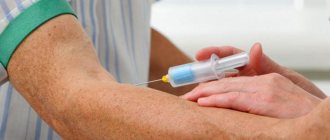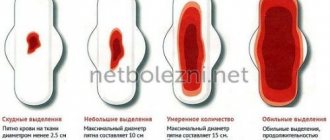The activated partial thromboplastin time (aPTT) test characterizes the state of one of the three mechanisms of the hemostatic system - coagulation (blood clotting). Using the APTT analysis, all types of hemophilia are diagnosed - A, B and C, as well as hereditary, autoimmune diseases and the phases of DIC syndrome are determined.
You can take the APTT test and get reliable results with a transcript of the analysis in the Laboratory of Hemostasis Pathologies at the MLC, the base clinic of Moscow State Medical University named after. Sechenov.
When is an APTT test prescribed?
APTT is part of the blood tests for hemostasis, which are taken when planning pregnancy. The test is also prescribed for genetic predisposition to thrombosis, spontaneous bleeding of unknown origin, diagnosis of hemophilia, treatment of heart attack, during pre- and postoperative examinations.
Based on the results of the analysis, the presence of coagulation inhibitors is determined - signs of systemic lupus erythematosus and antiphospholipid syndrome, severe autoimmune pathologies. The APTT test is also used to monitor heparin therapy.
Complexes with this research
Coagulogram Study of the functional state of hemostasis 1,110 ₽ Composition
Examination during pregnancy. 3rd trimester 5,730 ₽ Composition
Miscarriage Identification of the main causes of miscarriage RUB 29,050 Composition
IN OTHER COMPLEXES
- Extended coagulogram RUB 2,730
- Joining IVF RUB 15,030
- Female infertility RUB 9,790
- Examination during pregnancy. 1st trimester 10,390 RUR
- Pregnancy planning. Clinical indicators RUB 3,880
Benefits of analysis
APTT is a highly focused study that diagnoses several pathologies of hemostasis. The coagulation mechanism of hemostasis ensures the “sealing” of damage in blood vessels with fibrin clots and is influenced by blood coagulation factors.
Using the APTT test, you can detect a deficiency of the main factors affecting coagulation:
- 2nd, prothrombin;
- 5th, proaccelerin;
- 8th, antihemophilic globulin;
- 9th factor;
- 10th, Fr. Stewart-Prower;
- 11th, Dr. Rosenthal;
- 12th, Dr. Hagemann.
Need for diagnostics
Often, determination of aPTT is prescribed for the diagnosis of the following pathologies and conditions associated with the treatment:
- Hemophilia. With this dangerous disease, spontaneous or trauma-mediated hemorrhages occur in internal organs and muscles.
- Thrombosis or genetic predisposition to it. Clots form in the blood vessels, preventing free blood flow.
- Excessive bleeding and bruising that occurs without an obvious traumatic stimulus.
- Disseminated intravascular coagulation syndrome (DIC), which is based on excessive stimulation of blood coagulation processes.
- Treatment of cardiovascular diseases.
- Monitoring heparin therapy aimed at reducing clotting.
- Determination of deficiency of certain coagulation factors underlying diseases characterized by bleeding.
- Planning the operation to prevent large blood loss.
- Postoperative condition.
- Pregnancy, infertility, cases of premature spontaneous birth.
- Diseases associated with low or high levels of fibrinogen protein, which, under the influence of enzymes, is converted into the basis of a blood clot. Excess fibrin leads to blood clots in blood vessels, while too little fibrin leads to bleeding.
- Liver diseases. This organ is involved in the production of fibrin.
- In chronic glomerulonephritis, blood filtration is impaired, and the formation of blood clots disrupts this process.
Decoding
The standard for the test is 24-35 seconds. Physiological changes in hemostasis occur in the body of expectant mothers, so the APTT during pregnancy is reduced to 17-20 seconds. The type of pathology is determined based on the shortening or lengthening of the APTT.
What does it mean if APTT is higher than normal?
Prolongation of APTT is a sign of deficiency of blood coagulation factors: 8th in hemophilia A, 9th in hemophilia B, 11th in hemophilia C, as well as von Willebrand disease - an inherited tendency to spontaneous bleeding.
If the marker increases, additional tests are performed for lupus anticoagulant and antiphospholipid syndrome, and if the patient receives heparin injections, the dose of the drug is adjusted.
What does it mean if APTT is below normal?
A shortening of the activated partial thromboplastin time indicates the risk of developing thrombosis - blockage of blood vessels, or thromboembolism - a blood clot breaking off and entering the circulating blood. Low aPTT determines the first phase of disseminated intravascular coagulation.
If venous blood is collected incorrectly or the sample is contaminated, a decrease in the marker is also observed - in such cases, the analysis is repeated.
Causes of increased or decreased APTT
APTT values are classified as normal, elevated or decreased.
APTT is increased due to the following pathological conditions or errors in the analysis:
- hemophilia;
- lack of calcium;
- acute leukemia;
- DIC syndrome;
- bleeding that occurs after childbirth;
- lupus anticoagulant;
- genetic pathologies;
- improper preparation for the test;
- taking heparin or other medications.
Among the reasons causing decreased APTT values are:
- inflammatory diseases;
- thrombosis;
- thromboembolism;
- initial DIC syndrome.
Where to get tested for APTT in Moscow
You can take an APTT test and get advice from an experienced hemostasiologist at the Women's Medical Center on Zemlyanoy Val. Our Hemostasis Pathology Laboratory has high-precision blood analyzers, high-quality reagents and consumables, which guarantees the reliability of the research results.
Along with the APTT test, you have the opportunity to take tests close to it: 2-TEG, extended hemostasiogram, tests for VA and APS, Antithrombin, and also determine the anti-Xa activity of heparin in the blood. In the experimental laboratory of the MLC, we are engaged not only in diagnostics: we research and practice new methods for treating hematological diseases.
In one of the private laboratories you are another statistical unit, but with us you are a patient who is ready to be helped by the best doctors in Moscow.
What can affect APTT results?
As with other tests, the APTT test may have an erroneous result. This can happen for a number of reasons:
- The tube into which the blood was drawn turned out to be dirty
- Shortly before the test, you ate fatty foods.
- The ratio of anticoagulants to plasma was incorrect.
- If a woman donated blood during her period.
Therefore, it is extremely important to follow all the doctor's instructions before taking the APTT test. These recommendations are simple and do not require much effort from the patient:
- Blood donation is usually carried out in the morning. At least 10 hours must pass since your last meal. Drinking water is not forbidden. Eating fatty foods is highly undesirable for several days before the test.
- Over the last 24 hours, you must completely abstain from alcohol, medications, and heavy lifting.
- Immediately before blood collection, drinking coffee, tea or smoking is not recommended.
- To check the study, blood must be donated at the same time of day to the laboratory.
- A person should be emotionally relaxed and avoid stress.
The essence of the analysis and what the research shows
APTT (also APTT) is an auxiliary method of an extended coagulogram. They always study it. From the patient's point of view, there are no differences from a standard blood test. After the laboratory technician has collected the biomaterial, it is sent to a specialist.
How to work with a sample:
- The blood is divided into fractions. Doctors are interested in the liquid part, that is, plasma. She is low on platelets, which is exactly what she needs. Otherwise, the formed cells will disrupt the overall picture and affect the results. The main component remains in place: these are special proteins, fibrinogen and coagulation factors.
- Next, special chemical reagents are added to the clean sample. Calcium chloride, koalin and cephalin. This is a kind of provocative test that shows how efficient the clotting factors are. Ultimately, the sample should coagulate.
- APTT is calculated in seconds. Accordingly, when the blood completely changes compared to the initial state, then we can talk about the end of the analysis. The period from the introduction of reagents to the coagulation of liquid tissue is called APTT.
- Deciphering does not present any great difficulties if the reference values and counting methods are known. An increase in APTT means hypocoagulation: the time increases, the blood clots more slowly. It's liquid. A decrease in the indicator is hypercoagulation. The fabric reacts too quickly. It's thick. In the future, this condition almost guarantees thrombosis.
This study is rarely carried out in isolation. It's informative, but there are a few problems:
- As such, the indicator does not diagnose external coagulation disorders. That is, nothing is known about the work of platelets, their adhesion and aggregation. This is where the problem may lie.
- On the other hand, there are major differences in the methods that laboratories use. Therefore, there is no single normal meaning. This imposes certain requirements on the work of the doctor and the laboratory itself.
Specialists must indicate the ways in which they examine biomaterial. It doesn’t hurt for a hematologist to familiarize himself with the technology. Requires in-depth knowledge in diagnostics.
Basically, APTT is carried out in parallel with the study of prothrombin time.
How to increase APTT
To increase APTT, the following techniques are used:
Anticoagulant therapy:
- heparin medications, Pradaxa, Clexane;
Pradaxa
Clexane - taking medications of the fibrinogen group - Warfarin;
Warfarin - taking antiplatelet agents - medications based on acetylsalicylic acid to thin the blood - Aspecard and Aspirin.
Aspecard
Aspirin
A therapeutic anti-cholesterol diet is also recommended for the patient. Cholesterol plaques impede blood flow, and its slowdown, in turn, leads to increased coagulation and a decrease in aPTT. Vitamin-mineral complexes containing vitamins E, C, A and omega3 will also be useful.
How to lower APTT
To reduce aPTT it is recommended:
- coagulant therapy - Tranexam, Dicynon;
Tranexam
Dicynone - vitamin therapy with vitamin K - Vikasol injections;
Vikasol - treatment of underlying diseases;
- blood transfusion with an increased coagulation index.
A diet high in animal proteins will be beneficial. It is recommended to eat more lard, butter, fatty cottage cheese and sour cream, fatty cheeses and fish, eggs, red meat, red vegetables and fruits, legumes, and herbs.
Preparation and delivery of analysis
Before the procedure, you should follow simple recommendations.
- 5 hours before the test you need to refuse food. On an empty stomach, the results will be more accurate and the likelihood of errors will be much lower. This happens due to the dynamics in the bloodstream.
After a heavy meal, the liquid connective tissue thickens. This affects both prothrombin time and APTT. True, we are talking about short-term changes. But this is enough to distort the results.
- Under no circumstances should you smoke. How much? In about 3-5 hours. Nicotine is indeed harmful, but the main danger is caused by other substances. When tobacco and dye are burned, a lot of things are released: cadmium, arsenic, volatile carbon compounds, such as methane.
They enter the blood through the pulmonary system and inhibit the production of coagulation factors. And if the experience is long, then on the contrary - the liquid tissue quickly thickens, blood clots form. Smokers with “experience” would do well to abstain from cigarettes longer. 2-3 days. Because the body later returns to normal.
- You can't overexert yourself physically. Mechanical stress causes hypercoagulation. There are many clotting factors produced. And besides, during sports or exhausting work, a person loses water. The useful volume of liquid connective tissue decreases, but the amount of coagulation factors does not disappear.
It turns out that a smaller volume of blood in proportion is affected by more specific substances. This will definitely affect the analysis. There will be a serious deviation.
Of course, the body will quickly return to normal. But the study turns out to be false, and you will have to take the test again. The regimen needs to be adjusted 8-12 hours before the procedure.
- Stress is also excluded. Mental stress is no less dangerous. The fact is that after nervous tension, the adrenal glands begin to work actively. They synthesize cortisol, adrenaline, and trigger the release of norepinephrine.
These substances change the rheological properties of blood. The fabric becomes too thick. Coping with stress is much more difficult than giving up physical activity. It is enough to calm down an hour or two before the analysis.
You can take a herbal sedative tablet. For example, Valerian or Motherwort. But not alcohol tincture. Ethanol excites the nervous system, provokes blood thickening, the effect will be the opposite.
The patient will not notice any particular difference between a coagulogram, aPTT study and a simple CBC. All the same.
Biomaterial is taken from a finger or from a vein. This depends on the practice adopted in the particular laboratory. Then the tube is labeled and sent further.
Some centers assess clotting rates on site. But in the case of APTT in a coagulogram, this is quite difficult. Because it is necessary to purify the blood, isolate the liquid fraction and provoke a chemical reaction.
Typically, the patient receives results within 2-3 days.
APTT during pregnancy
During pregnancy, a coagulogram is prescribed every 12 weeks because the expectant mother:
- hormonal levels fluctuate;
- a new circle of blood circulation is formed;
- the body begins to adapt to future blood loss.
During pregnancy, any blood clotting pathology is dangerous with serious complications. The APTT rate during this period can vary from 14 sec. up to 18 sec. or up to 20 sec. A shortened APTT time indicates that the blood has thickened and blood clots may occur.
Thrombosis in expectant mothers can appear anywhere, and its appearance in the vessels of the placenta can cause abruption, which is fraught with serious complications. Prolongation of the APTT time threatens uterine bleeding, sometimes leading to death.
Any failures of hemostasis during this period can provoke the occurrence of DIC syndrome, in the initial phase of which clots begin to form vigorously, and in the second or third phase there is a decrease in coagulation, threatening massive blood loss. DIC syndrome is a poorly controlled process that poses a huge danger.
If there are no difficulties, a hemostasiogram is prescribed 3 times during the entire period. If during pregnancy there are signs of gestosis or there is a risk of miscarriage, the study may be carried out more often.
COVID-19 is associated with increased blood clotting. Patients with COVID-19 often have elevated levels of D-dimer, high concentrations of which are a predictor of death. Experts from the International Society of Thrombosis and Hemostasis (ISTH) believe that an increase in D-dimer levels by 3-4 times in a patient with COVID-19 is an independent indication for hospitalization.
Patients with COVID-19 are often diagnosed with both obvious thrombotic complications with the identification of large blood clots (not only in the veins and pulmonary arteries, but also in the heart, brain vessels, kidneys, liver), and signs of thrombosis at the microcirculatory level, which is intravital quite difficult to prove. Some researchers suggest that in COVID-19, thrombosis of the microvasculature may underlie damage to many organs, including multiple organ failure. For example, thrombosis of the renal vessels can lead to increasing renal failure, and of the microvasculature of the lungs - to worsening respiratory failure. Interestingly, when the myocardium is damaged by signs of inflammation and interstitial fibrosis, viral particles are not detected directly in the myocardium. Researchers suggest that myocardial damage may develop against a background of hypoxia, microvascular thrombosis, and a systemic inflammatory response.
The mechanism of hypercoagulation in patients with COVID-19 is presumably associated with severe endothelial dysfunction and induction of platelet aggregation (the endothelium carries ACE2 receptors and is a target for the SARS-COV-2 virus). Separate series of studies have also been published in which an increase in titers of antibodies to phospholipids was detected in patients with COVID-19 and massive thrombosis (https://www.nejm.org/doi/full/10.1056/NEJMc2007575), however, such transient changes may be nonspecific nature, since they are often detected during a pronounced inflammatory reaction.
Now the prescription of anticoagulants in a prophylactic dose in hospitalized patients with severe COVID-19 to prevent venous thromboembolism has become almost universal practice; This therapy has been shown to reduce mortality in patients with COVID-19. Clear indications for prescribing anticoagulants have not been determined, and the question of which drugs are best to use has not been fully resolved. Theoretically, it appears that unfractionated heparin, which has its own anti-inflammatory effects, may have some benefits. Moreover, it is believed that it may reduce the binding of viral particles to target cells. On the other hand, the use of UFH requires more frequent nurse visits to the patient (several times a day), which exposes staff to greater risk. Therefore, many clinics in the United States use direct oral anticoagulants to prevent VTE.
However, to date, expert communities recommend the use of low molecular weight heparins in severe patients with COVID-19. Thus, ISTH recommends prescribing LMWH in a prophylactic dose to all patients hospitalized due to COVID-19, even if they are not in intensive care (contraindications - active bleeding, thrombocytopenia <25 -="" 1500="" 8="" p= "">The latest version of the temporary recommendations of the Ministry of Health of the Russian Federation for the treatment of patients with COVID-19 says the following in this regard: "It is recommended to include low molecular weight heparin drugs in the treatment regimens of such patients. The criterion for prescribing drugs may be cumulative changes in the general blood count (thrombocytopenia) and coagulogram (increased D-dimer level, prothrombin time) or the risk of developing coagulopathy, which was stratified according to the sepsis-induced coagulopathy (SIC) scale" (https://static-1.rosminzdrav.ru/system/attachments/attaches/000/ 049/951/original/09042020_%D0%9C%D0%A0_COVID-19_v5.pdf).
In severe patients with COVID-19, the frequency of thrombotic complications remains high even with the use of anticoagulants in a prophylactic dose, so some experts are discussing the possibility of prescribing anticoagulants in a full, therapeutic dose.
Given the lack of an adequate evidence base, the management of anticoagulant therapy in each severe patient with COVID-19 should be discussed individually, taking into account the risk of thrombosis and bleeding.
Experts recommend monitoring indicators that characterize blood coagulation, such as prothrombin time, D-dimer, fibrinogen levels, and platelet count.
Patients with severe COVID-19 often develop thrombocytopenia, but hemorrhagic complications are rare. Laboratory signs of hypocoagulation without bleeding do not require any correction.
If patients develop major bleeding, empirically fresh frozen plasma (FFP) should be used, Ermassa should be used if indicated, then the tactics depend on laboratory parameters:
- if INR>1.5 or increase in aPTT by more than 1.5 times - use FFP
- if fibrinogen is less than 1.5 g/l - cryoprecipitate or fibrinogen concentrate
- if platelets are less than 50 thousand / μl - platelet transfusion
- in the absence of signs of disseminated intravascular coagulation, tranexamic acid can also be used; - recombinant factor VIIa preparations should not be used.
Based on materials:
- ACC/Chinese Cardiovascular Association COVID-19 Webinar 1. https://www.youtube.com/
- Thachil J et al. ISTH interim guidance on recognition and management of coagulopathy in COVID-19. published: 25 March 25, 2020 (link)
- Hunt B et al. Practical guidance for the prevention of thrombosis and management of coagulopathy and disseminated intravascular coagulation of patients infected with COVID-19. March 25, 2021. Published on
Text: Shakhmatova O.O.
Factors causing deviations
Such changes are caused by two factors.
A new utero-placental circulation is added to the female body. The placenta contains a lot of vessels through which severe blood loss occurs even with a small area of detachment. An episode of placental abruption can occur when there is an increase in uterine tone - a threat of miscarriage.
A reduction in the period of thrombus formation is required during childbirth as a compensation mechanism. After the birth of a baby, when the placenta is separated, a woman immediately loses blood up to four hundred milliliters. With such massive and rapid blood loss, the coagulation system must be prepared to rapidly form blood clots and prevent further blood loss.
How to take a coagulogram?
We talked about what a coagulogram is and why this test is taken. Now let’s figure out how to properly undergo a hemostasiogram so that, based on the results obtained, the doctor can make the right conclusion and choose an effective treatment plan.
So, if you need to do a blood clotting test, then remember the following rules:
- blood is donated exclusively on an empty stomach, it is better that more than 12 hours have passed since your last meal;
- on the eve of the analysis, you should not eat too spicy food, you should also refrain from smoked meats and overly fatty foods;
- It is strictly prohibited to drink any alcohol, even if the drink contains a small percentage of it;
- don't smoke;
- It is recommended not to take medications before the analysis, and if medications are vital, you should definitely notify the laboratory technician about this and indicate which medications are prescribed to you.
A standard hemostasiogram can be done in most public clinics, and an expanded or detailed analysis is more often available in paid medical institutions. For example, in the Invitro laboratory, a coagulogram can be done quite quickly. As a rule, the test result can be collected within a couple of days. This is due to the need for a number of chemical reactions that require a certain amount of time, which simply cannot be avoided.
However, in any case, you will receive the result of a paid analysis much faster than in a government institution, where the laboratory is heavily loaded due to the influx of patients or may not have certain reagents necessary for the study. The cost of the analysis depends on the number of parameters that need to be studied and varies from 1000 to 3000 rubles.
If APTT is below normal
If aPTT is reduced, the doctor may suspect:
- I phase of DIC syndrome;
- presence of cancer;
- amyloidosis;
- vascular diseases;
- liver diseases.
However, often a decrease in the indicator can be caused by more mundane reasons:
- abuse of fatty foods;
- taking certain medications - thromboplastin, etc.;
- dehydration.
A low level warns of the possibility of developing thrombosis and thromboembolism. To clarify, additional research is carried out on fibrinogen and other elements.
Article on the topic:
What is somatotropic hormone (growth hormone)?
In case of any deviations and in the absence of complaints, it makes sense to retake the analysis again. Some inconsistencies can cause sampling errors: for example, if blood is squeezed out or if the drawing is done through a catheter.
Features of the test
The study of coagulation rate makes it possible to determine in adults and children systemic deviations associated with violations of the quantitative or qualitative indicators of blood factors.
Diagnostic analysis is done in the following order:
- The material for research is added to a test tube containing an anticoagulant that binds calcium ions, so that the blood does not clot.
- Centrifugation is done to separate the blood plasma from various elements (platelets, etc.).
- After this, calcium chloride, activator and phospholipids are added to the test tube.
- The period of blood clot formation is assessed.
Phospholipids are required for activation of the extrinsic coagulation pathway, and calcium chloride is an important element during coagulation. Such an analysis does not fully evaluate the process of blood clot formation, but it allows one to determine the deviation of the APTT from the norm in order to subsequently find the cause of this pathology.
Deviations from the norm
You might be interested in: How to determine the body’s water balance and what kind of water can be harmful?
What can cause APTT deviations from the norm?
When conducting diagnostics, the result may be false if the following factors affect the analysis:
- eating salty and fatty foods before a diagnostic test;
- material contamination;
- a decrease in aPTT is observed during menopause and pregnancy.
When the interpretation of the result reflects a deviation from the normal APTT in the analysis, despite the analysis being carried out according to all the rules, one can judge hemophilia, liver disease or other serious pathologies.
APTT norm for different groups
The indicator is measured in seconds and depends on the treatment used, nutrition and age of the patient.
A normal value for an adult is a partial activated thromboplastin time result of 24-40 seconds. For newborn babies, this figure is 1-3 seconds higher, for a premature baby – 3-5 seconds higher than normal.
A prolongation of the indicator is diagnosed if there is an increase or decrease in any coagulation factor by more than 30%.
It is necessary to calculate the partial activated thromboplastin time in adults and children to determine the cause of pathological thrombus formation, as well as to assess the degree of effectiveness of anticoagulant therapy.
What it is?
You may be interested in:Hypokinesia is... Description, consequences, prevention, types and treatment
The APTT test is performed along with other diagnostic procedures to assess thrombosis and coagulation, as well as monitor the degree of effectiveness of heparin treatment.
Clotting is a vital process that is responsible for preventing major blood loss. Normal clotting time reflects the effective interaction of elements during thrombus formation.
The coagulation cascade, that is, the order of activation of blood clotting factors, has two ways - internal and external. The external pathway is characterized by the release of tissue factor, the internal pathway triggers the formation of a blood clot inside the vessel.
You may be interested in: Pancreatic amylase: normal level in the blood, reasons for the increase, possible diseases
Many people are interested in what the APTT rate is.
